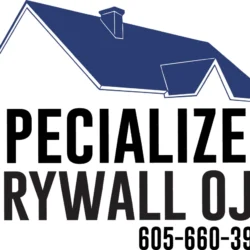In workplaces, public facilities, laboratories, and transportation hubs, maintaining safety and cleanliness is a top priority. One simple yet powerful tool that helps achieve this is the No Liquids Allowed sign. While it may seem like a small detail, this sign plays a critical role in preventing accidents, protecting equipment, and keeping environments hygienic and organized. From offices to hospitals, data centers to factories, the No Liquids Allowed sign serves as a clear reminder to everyone that liquids have no place in certain areas where they can cause harm or disruption.
Why No Liquids Allowed Signs Are Important
Liquids, while harmless in many settings, can pose significant risks in specific environments. A spilled drink can cause slips and falls, moisture can damage sensitive equipment, and contamination from liquids can ruin valuable materials. The No Liquids Allowed sign provides a visual cue to prevent such incidents before they occur.
In addition to promoting safety, these signs help maintain order and discipline in workspaces. They act as a universal language — even in areas with diverse staff or public visitors — ensuring everyone understands that bringing or using liquids in certain zones is strictly off-limits.
Common Places Where No Liquids Allowed Signs Are Used
These signs can be found in a variety of commercial, industrial, and public locations, each with unique safety and cleanliness requirements:
1. Laboratories and Research Facilities
In labs where scientific testing or research is conducted, even a small spill can compromise experiments, damage instruments, or cause chemical reactions. A No Liquids Allowed sign ensures researchers and staff keep beverages or other fluids away from controlled environments.
2. Data Centers and Server Rooms
Electronics and moisture are never a good mix. Liquids can short-circuit servers, computers, and other delicate hardware. Signs prohibiting liquids help protect thousands of dollars’ worth of equipment and prevent data loss or operational shutdowns.
3. Manufacturing and Industrial Areas
Factories and production floors often involve machinery that must remain dry to function correctly. Liquids can cause mechanical issues or pose electrical hazards. These signs help enforce strict safety protocols to keep operations running smoothly.
4. Hospitals and Medical Facilities
Cleanliness and contamination control are essential in healthcare environments. No Liquids Allowed signs help prevent spills, bacterial growth, or contamination in critical areas like operating rooms or laboratories.
5. Museums and Art Galleries
Liquids can damage priceless artwork and artifacts. Posting these signs near exhibition areas ensures that visitors are aware of the risks and avoid bringing drinks or liquids near valuable displays.
6. Control Rooms and Offices
In environments where staff handle computers, documents, or sensitive data, No Liquids Allowed signs help prevent accidental spills that could damage equipment or materials.
7. Public Transit Areas
In airports, train stations, and buses, these signs remind passengers of safety and cleanliness regulations. Liquids can create hazards in crowded or moving areas, making such signage essential for public safety.
Benefits of Using No Liquids Allowed Signs
Implementing these signs in critical areas offers several advantages beyond basic safety:
1. Prevents Accidents and Injuries
Spilled liquids are one of the leading causes of slips and falls in workplaces. Clear signage helps prevent these incidents, reducing injury risks and ensuring compliance with health and safety regulations.
2. Protects Expensive Equipment
Electronics, machines, and office equipment are vulnerable to water damage. By discouraging liquids, these signs protect assets from costly repairs or replacements.
3. Maintains Cleanliness and Hygiene
Liquids can create sticky, unsanitary surfaces or promote mold growth. Restricting liquids in certain areas ensures a cleaner and more hygienic workspace.
4. Reinforces Professionalism
Workplaces that maintain clear signage and organization reflect discipline and professionalism. The No Liquids Allowed sign communicates a company’s commitment to safety and care.
5. Ensures Compliance with Regulations
Certain industries, such as manufacturing, healthcare, or food production, are subject to strict safety codes. Proper signage helps meet legal and operational requirements.
Design and Material Options for No Liquids Allowed Signs
For maximum effectiveness, these signs must be easily visible, durable, and clearly designed. Most feature a universally recognized symbol — a red circle with a diagonal line crossing over a cup, bottle, or liquid drop — accompanied by bold, legible text.
Here are some popular material options:
-
Aluminum Signs: Long-lasting and rust-resistant, ideal for indoor and outdoor use.
-
Plastic or PVC Signs: Lightweight and affordable, suitable for offices or indoor facilities.
-
Acrylic Signs: Sleek and professional-looking, perfect for modern corporate spaces.
-
Vinyl Decals: Easy to apply on doors, walls, or equipment surfaces.
Reflective or glow-in-the-dark versions are also available for areas with low lighting or 24-hour operations.
Customization Options for Businesses
Many businesses prefer to order custom No Liquids Allowed signs that reflect their brand identity or include specific instructions. For example, companies may add logos, bilingual text, or unique warnings tailored to their environment — such as “No Liquids Near Electrical Panels” or “Keep All Drinks Away from Workstations.”
Custom signs from trusted suppliers like SignFever.com allow organizations to blend functionality with professional design, ensuring the signs match the aesthetic and tone of their workplace.
Placement Tips for Maximum Visibility
Strategic placement determines how effective your No Liquids Allowed signs will be. Consider these tips:
-
Install at Entry Points: Place signs at entrances to restricted zones so people see them before entering.
-
Position at Eye Level: Ensure signs are visible without needing to look up or down.
-
Use Multiple Signs: Large or high-traffic areas may require several signs for reinforcement.
-
Combine with Floor Markings: In highly regulated environments, pairing signs with floor decals or barriers enhances clarity.
Conclusion
The No Liquids Allowed sign might seem like a simple precaution, but its impact on safety, cleanliness, and professionalism cannot be overstated. From preventing accidents and protecting valuable equipment to maintaining hygiene in critical spaces, these signs serve as essential tools in any well-managed facility.
By displaying clear, durable, and well-designed No Liquids Allowed signage, organizations demonstrate responsibility and foresight — protecting their people, assets, and reputation. Whether in a high-tech data center, a busy factory, or a quiet museum, one sign can make all the difference in keeping environments safe and orderly.




